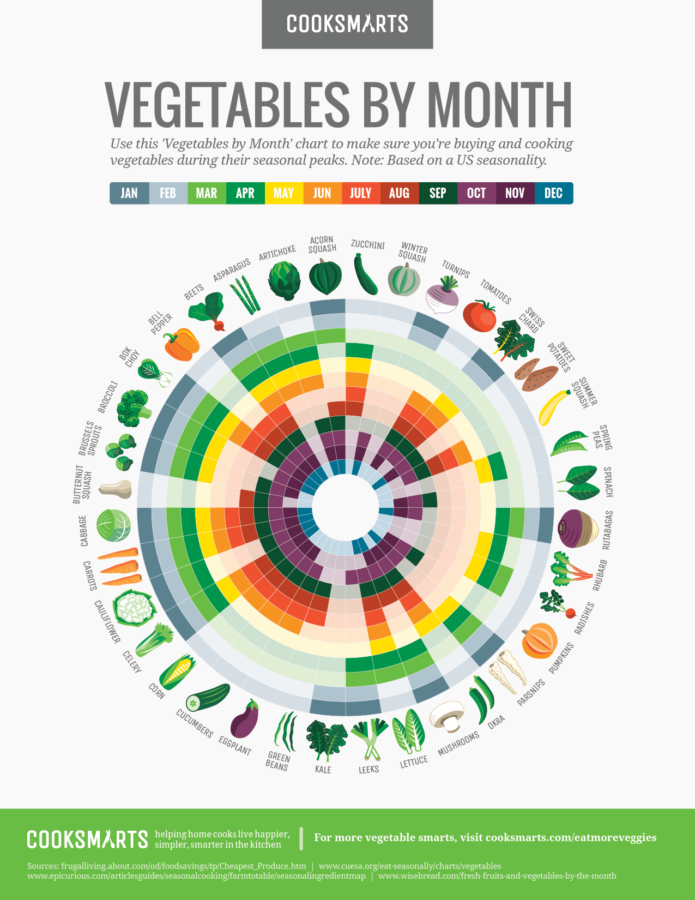This may seem obvious, but every season ushers in a bounty of fruits and vegetables that thrive in a particular climate. For example, we tend to associate root vegetables with winter months, hearty and warming in stews and soups, and juicy, succulent berries with summertime. We associate oranges with Florida, avocados with California, peaches with Georgia, pineapples with Hawaii, potatoes with Idaho, cherries with Michigan, and tomatoes with New Jersey. Cheese with Wisconsin. Lobsters with Maine. Pinot Noir with Oregon.
You get the drift.
But while most fruits and vegetables have their specific growing seasons and locales, mostly everything we eat is now available year round. Even so, there’s a benefit to observing seasonality and locality when choosing what to put on your plate and in your body.
Local food is cheaper, fresher and tastier.
For starters, fruits and vegetables are often cheaper when purchased in their growing seasons, and even fresher and tastier when purchased from local farms. Think about it: if you’re buying produce from another country (let’s say Mexico or Peru) or a state halfway across the country (let’s say California or Arizona, presuming you live in NYC) versus somewhere more neighborly (like NY, NJ or CT), that means a longer time in transit and therefore, a less fresh option. And fresher produce is both tastier and more nutritious.
According to Vox, most of the commercial produce sold in supermarkets is grown for color, size and durability. That doesn’t mean it’s more flavorful. What’s worse is that so much of our nation’s produce supply—40 percent—never even makes it to market because it’s not “pretty” enough to sell. In fact, we explained this phenomenon also known as “ugly fruit” in our April blog post entitled, The 3 R’s of Food Waste: Reduce, Reuse, Recycle, with tips on how to waste less perfectly good food!
What often distinguishes locally-farmed produce is its size, shape and color—it may be smaller, lack uniformity, and have the leafy greens attached. These are not reasons to overlook them; on the contrary, these are reasons to buy them! Use all your senses (sight, smell, taste, touch and sound) when shopping, and don’t be shy about trying before buying. In fact, many farmer’s markets and farm stands will encourage you to do just that.
The chef effect: local food is better for farmers, the economy and environment.
There’s a reason why the most celebrated chefs are championing local, seasonal and organic—and changing their menus regularly to highlight what’s in season; because local and seasonal produce is simply fresher and tastier (and yes, these restaurants are often pricier and a privilege at which to dine.) And, buying and eating locally helps support the local economy, while reducing your individual carbon footprint. Here’s a list of the best farm-to-table restaurants in New York according to the NYC Food Policy Center if you’re looking for a special dining occasion.
So what’s in season now, you ask?
According to The Kitchn, lettuces, turnip greens, kale, and some root vegetables like fennel and onions are signatures of spring—and more specifically the month of May. You’re also likely to see strawberries, rhubarb, and asparagus and okra. Spring is when farmer’s markets open for business after a chilly winter, and there’s no shortage of options across New York City. For a listing of local farmer’s markets near you, along with what’s in season each month, check out GROWNYC’s guide to what’s fresh monthly. Also, we love these two nifty infographics from Cooksmarts which you can purchase as a calendar to keep you mindful of what to buy and eat each month.
There are so many ways to support local farms! Check out Local Roots NYC for a variety of farm-fresh subscription boxes delivered directly to your door. Or, the best CSAs (Community Supported Agriculture) across the five boroughs of NYC according to Just Food and Local Harvest. Shop smaller community grocers versus the national chains, as well as local gardening stores.
For more information about how eating locally and seasonally helps promote food justice and reduce food insecurity across the five boroughs of NYC, please join our community at www.ampletableforeveryone.org, and the conversation on Facebook and Twitter.



